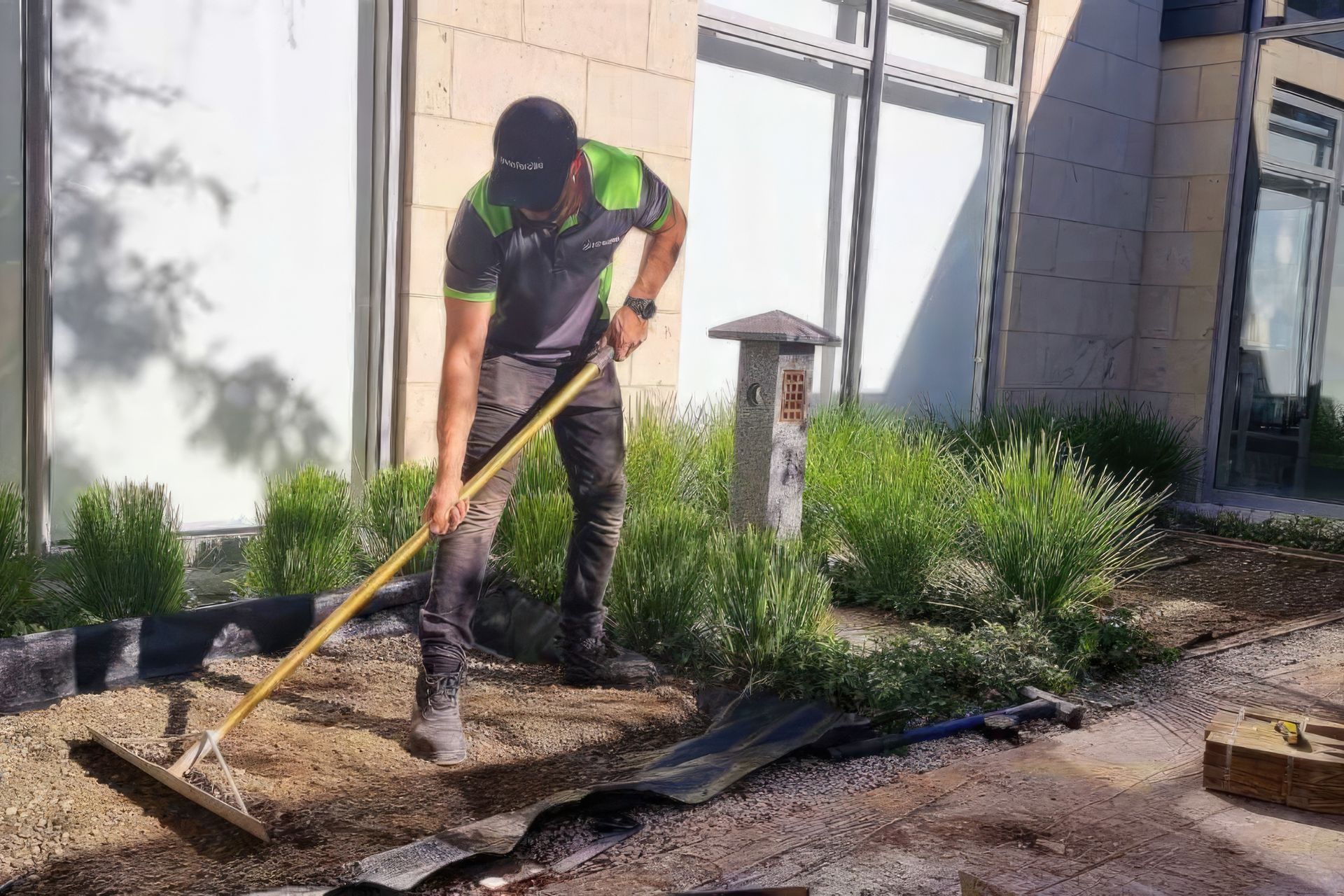How Deep Do I Need to Dig Out My Lawn for Artificial Grass Installation?

Why Proper Depth Matters for Artificial Grass Installation
So you’re considering installing artificial grass and have heard that some ground preparation is involved. This article answers the question, “How deep do I need to dig out my lawn for artificial grass installation?” In most instances, 100mm (10cm) is a sufficient depth to dig out or excavate from your typical lawn. However, a variety of factors could mean more or less needs to be dug out, which we will explain in more detail.

Why dig out soil when preparing an artificial lawn installation?
The base underneath artificial grass is prepared using compacted rock, similar to the base used under most pavers and concrete.
Digging out the existing soil removes any soft ground that may be prone to sinking or subsidence over time and allows for an aggregate base to be laid. The aggregate base has two key functions:
- It keeps the lawn flat and level over time, reducing the occurrence of sinking and undulation. Unlike soil, rock can be compacted very well, which means it will not sink further in the future.
- Aggregate drains well and doesn’t hold on to moisture and water as well as soil. This means your new lawn will drain faster.
The other important reason soil (and any organic material such as grass or plants) needs to be removed is to reduce the occurrence of weeds growing through into the SmartGrass. Most of the soft and decomposable organic matter is removed by digging the lawn and existing soil out by 100mm.
SmartGrass artificial grass stands out as the ultimate solution to these winter woes. With its advanced drainage technology and durable materials, SmartGrass ensures that your lawn remains beautiful, functional, and virtually maintenance-free, even in the harshest winter conditions.
When would I need to dig out more or less soil in preparation for artificial grass installation?
The typical process is to excavate the existing lawn to 100mm below the finished level. This leaves 100mm of depth to backfill with rock and lay the SmartGrass. Typically, the rock base is 85mm, leaving 15mm, which is the flattened thickness of the SmartGrass once sand infill has been applied.
The key determinant of how much soil you need to dig out is the hardness of the ground. If the ground is soft, prone to drainage issues, or has been disturbed (e.g., recently dug up, rotary hoed, or previously a garden), then you will need to dig more soil out until the substrate is firm. This can be 150-300mm in some places.
In some areas, less than 100mm of ground needs to be excavated, such as substrates with a high content of hard compacted rock or sand or areas that have been very well compacted for a number of years.

What happens if I don’t dig out enough soil in preparation for artificial grass?
Shortcuts, such as digging out less soil, may not be immediately apparent once the installation is completed. Over time, the lawn will likely have areas that sink, which can rip apart the grass, look very unappealing, and hold onto puddles of water.
It is also highly likely that mud and weeds will penetrate the grass, which can be very difficult to remove.
Can I avoid digging out soil altogether when laying artificial grass?
Digging out your lawn is a lot of work, especially if you have access constraints that make removing the soil labour-intensive. In some installations, there are alternative site-specific options to reduce the need to dig out soil. Please contact the team if this is a requirement of yours.
Some DIYers (Do It Yourself) lay artificial grass directly over a soil base. This can be done, but it will not look great or perform to a high standard, which most homeowners expect over time. This method is not recommended due to the high risk of weed growth, undulation and retention of water over time.
If you have a new build, often no excavation is required, as the landscape will be raised from the existing ground height.
Do the SmartGrass installers dig out soil and prepare the artificial lawn?
Yes — as much as 80% of the labour spent on an average ordinary lawn conversion to SmartGrass is on the preparation of the base. Like your house’s foundation, a good base is essential.
Our work includes the full excavation process; however, some clients choose to complete some or all of this process themselves through DIY. You can read more about our DIY artificial grass options.
We’re here to help
Every project is unique. If you’re starting a dig-out for an artificial lawn project, give our knowledgeable team a call now. We can usually give you site-specific instructions over the phone.
